Shooting the Yakuza
Anton Kusters spent two months photographing the yakuza. He tells Kyoichi Tsuzuki about the thrilling art project and how he got to see the human side of this formidable syndicate
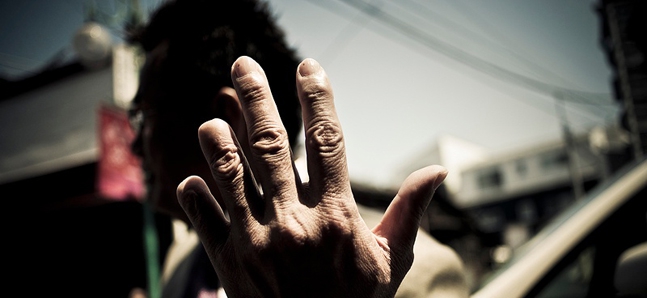
Posted: Fri Dec 20 2013
The photo collection 'Odo Yakuza Tokyo' is one of the most interesting Tokyo-related works of art that have emerged recently. Odo means 'righteous path', and the words Yakuza and Tokyo certainly don't require explanation.
'Odo Yakuza Tokyo' is the work of Anton Kusters, a young Belgian photographer, who travelled to Kabukicho in Shinjuku to document the everyday life of a certain yakuza syndicate. This rare project delves deep into a part of Japanese culture considered highly mysterious overseas, and succeeds at documenting the yakuza lifestyle in an objective, detached fashion. Few non-Japanese have plunged this deep into the world of organized crime here – and the number of Japanese photographers who have looked at yakuza culture so head-on is minuscule as well.
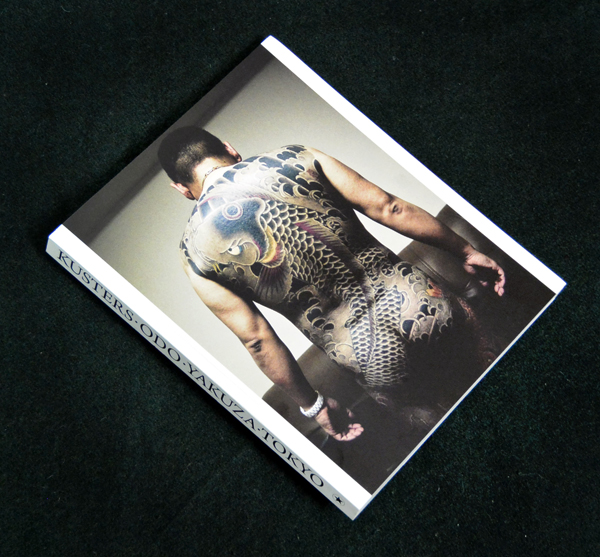
'Odo' was first released in June 2011 in Belgium, and was limited to 500 copies. Through word of mouth, the volume sold out in less than a month. In November of the same year, a second edition of 2,000 copies was run, but that too is now sold out. This year, Kusters exhibited his work in Genk (Belgium), Sydney, and Rome, culminating in a November show in Liège, close to his home town. We had a chance to sit down with him at that last exhibit, chatting with the photographer at the Academy of Fine Arts in Liège.
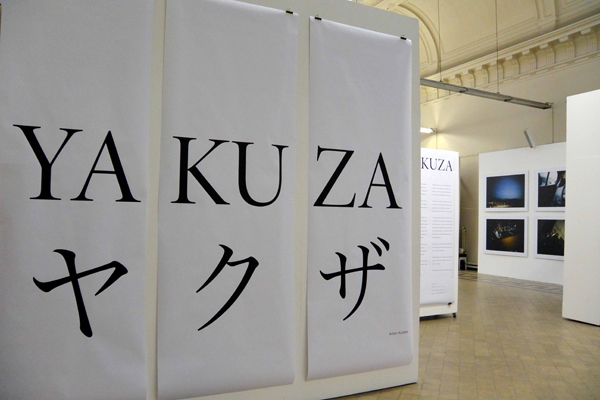
Entrance to the exhibit at the Academy of Fine Arts
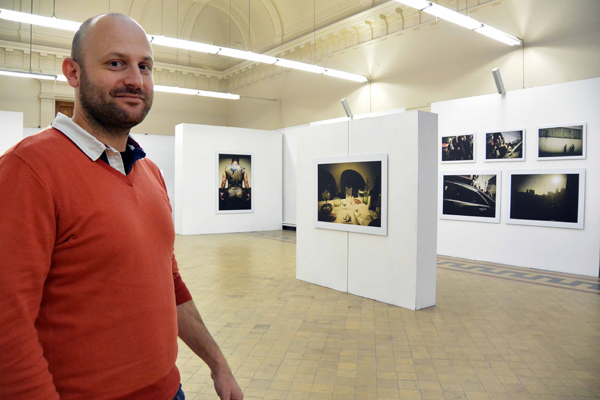
Anton Kusters
Anton Kusters was born in 1974. Now aged thirty-nine, he entered photography later in life, not starting out until in his thirties.
Kusters was born in Hasselt, some forty kilometres from Liège, one of eastern Belgium’s major cities (the name will be familiar to fans of Japanese football, as goalkeeper Eiji Kawashima plays for Standard Liège). His parents travelled for work, bringing their son to places like Saudi Arabia, Australia, and other points around the globe. Having grown up among a range of different cultures, Kusters was deeply influenced by the rich variety of lifestyles he came in contact with. Although he majored in political science at college in Leuven, Kusters first chose to enter the world of web design, starting a small firm with a couple of colleagues. Within a week of opening shop, planes struck the World Trade Center in New York. 'It was instant global turmoil; the worst possible time to start out'.
Kusters had his hands full managing the new company, but a new change awaited him in 2005, when he started taking night classes at an arts academy in Hasselt. 'The program was supposed to last four years, but I was completely over it by the third. Just as I was beginning to run out of steam, I took a workshop that changed my life, 180 degrees'.
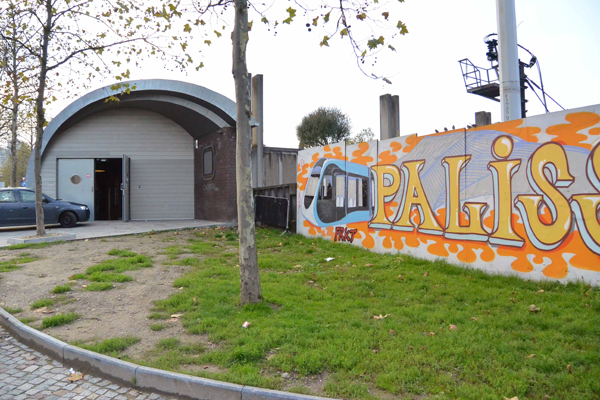
The entrance to Le Calderon, a club in central Liège housed in a former train station. Art is on display here when the club is in session
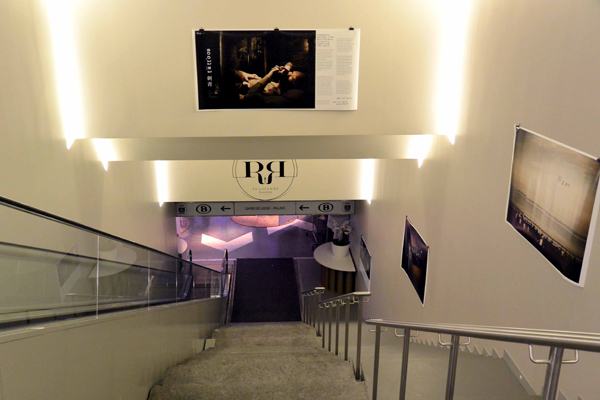
An escalator connects to the club lounge, with prints on display
Californian photographer and noted Magnum member David Alan Harvey (whose work has appeared in National Geographic and other major outlets, and also actively holds lectures and workshops geared at the next generation of photographers) launched a workshop in Hasselt in 2008. Inspired by Harvey’s words of encouragement, it was at this workshop that Kusters would make a complete about-face. The two went on to become friends and jointly released burn magazine in 2008, intended as a new outlet for photography. Kusters continued managing his web design firm, gradually devoting more and more of his time to photography.
Kusters’s brother, Malik, has lived in Tokyo since 2000. Odo Yakuza Tokyo, Kusters's first major series as a photographer, came about after he visited his brother in 2008, and experienced a small, unexpected episode that set everything in motion.

'I found myself in Tokyo with no idea what to shoot. One day, my and brother and I went for a drink at his favourite bar in Kabukicho. As we drank our beers, a sharp, suited man floated in, dressed to the nines. He freely exchanged words with the bar owner and patrons and was gone just as soon as he’d come in. We asked the owner about him, and were told that the guy was a key yakuza member in the area. This was so different from my image of yakuza that I was instantly fascinated. We requested the bar owner to intervene on our behalf and ask if I could photograph the man'.
'Naturally, I didn’t initially get the response I wanted. They thought I was with some newspaper or trying to do an investigative report. I explained that it was an art project intended for a photo collection or exhibit, not journalism. We kept meeting and making our case, and they eventually came to appreciate that we weren’t with the press. It took around ten months to negotiate. I spent the next two years photographing their lives'.
'At first, I had no idea how to behave, so it was very tense. There’s an unspoken rhythm in that world that goes beyond words, and it took me a long time to adapt to that pace, shall we say. It wasn’t a yes or no thing in terms of when I could and couldn’t take a picture. I had to learn to intuit based on the circumstances. Sometimes I’d want to take a photo but didn't have the nerve to go up in person. That nervous attitude started to become a nuisance to them: "You came here to take photos, so act like a pro!" Once I heard that, I started shooting pictures actively, rather than sitting on the sidelines'.
'I didn’t just want to "have permission" to shoot. I wanted us to be on an equal footing and to develop a good relationship. So first I encouraged them to tell me how they wanted to be photographed and would show them all of the resulting photos. I’d go to Yodobashi Camera almost every week to collect my prints and bring them over. They’d say, "This one’s OK", or "This is a no-go", and so forth. I think this process helped us build mutual trust as the project progressed'.
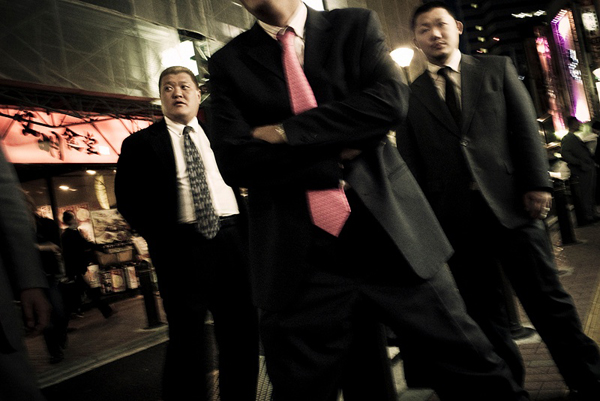
'I think this is now banned, but at the time, members of the syndicate would don their suits and make the rounds at night. My first experience was making that circuit with them, and it was thrilling for me. There wasn’t any threatening or violence involved: they’d simply be greeted as they passed and return the greeting. With those greetings alone, it seemed like they could convey crystal-clear messages around town'.
'I kept shooting through 2009. In 2010, one of the heads of the syndicate, who had helped me considerably, collapsed and was in critical condition. I happened to be in Belgium at the time, so I grabbed whatever I could and got aboard the next plane, rushing to Shinjuku. I got to the sickroom to find him in bed in a coma. The others there encouraged me to take his hand and speak to him. I don’t know if my words reached him. Here was someone always referred to as “kingpin”, or “yakuza", but all at once, I caught a glimpse of the true human side of things'.
'I visited the hospital for three days. Late at night on the third day, the boss took his last breath. I was right beside the group all the way through to the funeral ceremony, and they let me keep shooting even as they collected his ashes. Those photos proved too private to include in this exhibit. It’s possible that, given enough time, we might find a place for these photos in the future'.

'I spent two years taking about 20,000 pictures. I whittled this down to three hundred, then finally culled it to ninety-two images for the collection. Travelling to Japan, shooting, and putting the collection together was all out-of-pocket. In fact, it was my first time even making a collection, so I put a lot of thought into everything, from the layout and design to the type of paper we used. I had no ins with publishers, either, nor any experience or know-how in these things'.
'Fortunately, David [Alan Harvey] wrote an introduction and an interview appeared in burn magazine. The first five hundred copies sold out in under a month. Finally, at long last, I felt a sense of accomplishment, a sense of completion. Everything was done by word of mouth, so I was astonished that the book sold out. Those proceeds covered the travel costs and production expenses I had incurred up to then. Had I not self-published and gone with an actual publisher, royalties on the five hundred copies would have eaten into my bottom line and there’d have been no way I could cover the project. In retrospect, this approach requires money up front, but you’re much freer with what you want to do, and you can still produce a great result even if you aren’t reaping a huge profit'.
Over the course of our interview, and in the book’s text, Kusters emphasized that his project isn't a documentary, meant to convey a good or a bad message about yakuza. Kusters calls this approach 'art documentary'. In other words, there's no statement at work here: on view is the photographer’s worldview, seen through his subject matter.
'Yakuza in Japan aren’t exclusively on the fringes of society. In a sense, they have one foot in, and one foot out of, the mainstream. In what ways does Japan make that hybrid existence possible? I think shooting this series may have taught me a bit more about the subtle complexities of Japanese culture'.

The yakuza is a uniquely Japanese phenomenon, something altogether different from the mafia or triads. For Japanese people, that existence is so much a part of the fabric of everyday life that it has never been explored with real scrutiny. Depictions of yakuza have been the extremes found in tabloids, alternating between triumphant glorification and blame as criminal syndicates. Or, as the case may be, filmmakers and artists have used the yakuza as a mirror upon which to reflect their own feelings, with films like 'Battles Without Honor and Humanity' and 'Outrage', to name a few.
Anton Kusters’s Odo Yakuza Tokyo, by contrast, coolly moves beyond those Japanese conventions to yield something boldly new and provocative to the viewer. There is an unparalleled sense of proximity and clean vision at work here. Beyond this, the biggest impact comes from the sense of presence and beauty on display, depictions that go beyond ideas of good or bad. The artist avoids negating his subject matter, showing the inherent beauty in these scenes – a beauty not unlike a perfectly honed weapon; a beauty not unlike a perfect death.
Kusters’s latest show, Yakuza & Heavens, is currently on display at Monos Gallery in Liège (until January 15). The title alone sounds like an astonishing combination. Heavens here refers to a new series Kusters is at work on, a long-term project that sees him visiting the whopping 1,634 former concentration camp sites (including ruins) from the Nazi era and shooting the blue sky – the 'heaven above' – those locations. Through this series, Kusters aims to make sense, in his own terms, of the unprecedented calamity that was the Holocaust.
'Yakuza' is now on display in Hong Kong as well (until January 25), so those interested might want to book a trip - a show in Japan seems highly unlikely in the near future.
Read the full interview and see more of Kusters's pictures at www.roadsiders.com
Tweets
- About Us |
- Work for Time Out |
- Send us info |
- Advertising |
- Mobile edition |
- Terms & Conditions |
- Privacy policy |
- Contact Us
Copyright © 2014 Time Out Tokyo











Add your comment